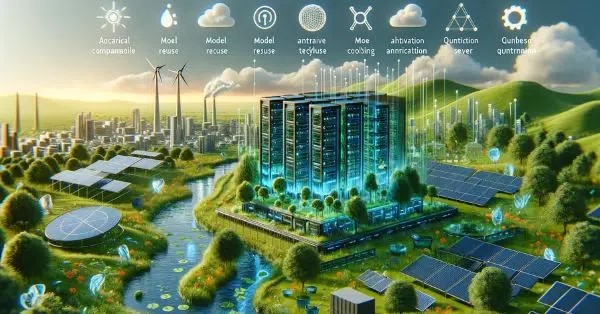Indoor 5G refers to the deployment of high-speed, low-latency 5G networks inside buildings and enclosed environments such as hotels, airports, offices, hospitals, shopping malls, and factories. With businesses and consumers demanding faster, more reliable, and secure connectivity, indoor 5G is becoming essential for smart buildings and next-generation digital services. It enables uninterrupted communication, enhanced automation, and advanced AI-powered operations, making it a game-changer across multiple industries.
Supporting mission-critical applications is a primary factor driving the indoor 5G. Applications that include emergency response coordination, real-time healthcare monitoring, industrial automation, and security surveillance rely on ultra-reliable, low-latency connectivity that legacy networks do not always provide indoors. Indoor 5G gives the ability to maintain high-quality wireless communications without interruptions in locations where time-sensitive decision-making and continuous data streaming are critical. As government entities and organizations continue to rely on these mission-critical applications, the demand for robust indoor 5G infrastructure continues to increase, which enables organizations to maintain safety, operational efficiencies, and resilience, in high-stakes environments.
Various technological advancements that offer improved performance and scalability influence the indoor 5G. These improvements in small cell technology, such as beamforming and multi-user MIMO support, are increasing the signal strength and user capacity in dense indoor spaces such as offices, shopping malls, airports, hospitals, etc. Furthermore, small cells are low-power, compact nodes that deliver fast 5G coverage where macro networks have difficulty penetrating. Also, mmWave (millimeter wave) and Sub-6 GHz frequency bands are interestingly combined in the networks to strike a balance between speed (with mmWave) and reliable coverage (with Sub-6 GHz) for greater versatility in different building types and use cases.
Asia-Pacific is set to emerge as the fastest-growing and largest Industry for indoor 5G solutions in the coming years.
The indoor 5G is currently dominated by the Asia-Pacific region, which is fueled by rapid urbanization, governments investing heavily in smart city projects, and various government initiatives urging the adoption of the next generation of connectivity infrastructure. Some of the early adopters of 5G technology such as China, South Korea, and Japan are focusing specifically on high-density indoor area. The evolution of China’s 5G network is progressing at a quick pace. Nonetheless, the indoor coverage in crucial locations, including transportation hubs, big stadiums, main commercial zones, and office buildings is still not meeting user expectations. By being open to new techniques such as 3CC CA, China Unicom Beijing currently offers a 300-MHz bandwidth during congestion indoor service and a heavy-load scenario at the Beijing Workers’ Stadium and Bird’s Nest.
Antennas are likely to see the fastest growth among distributed antenna system components during the forecast period.
Antennas are a vital component of indoor 5G deployments, as they provide effective signal distribution, better coverage, and enhanced network performance within enclosed environments. The antennas in the indoor area receive the signal from the carrier and disseminate that signal in the areas of usage. The critical part of deploying the indoor 5G is the antenna placements themselves, as the performance of an indoor 5G solution depends on it. Antenna placements are decided upon through coverage and capacity requirements, along with network topology and any building construction.
The picocell segment is expected to lead growth among small cell technologies in the coming years. Picocells are small cellular base stations optimized for providing targeted 5G coverage in indoor environments with a medium user density such as office buildings, hospitals, retail stores, and campuses. Picocells typically cover an area approaching or less than 200 meters and provide an enhanced, more stable signal in indoor space compared to macro cells, particularly when building materials affect coverage penetration. A single picocell can support between 30 to 100 individual users and has medium power levels for transmission between 250 milliwatts to 2 watts. Picocells rely on a wired or fiber backhaul connection to connect to the wider network infrastructure. These cells are typically deployed in high-volume or high-traffic indoor environments, where one coverage area will have multiple picocells.
Government subsidies and emerging economies create a significant opportunity for the indoor 5G market. As developing countries continue to improve their digital infrastructure and smart city initiatives, we are seeing the demand for robust indoor connectivity in public buildings, transit centers, hospitals, and schools increasing. Countries in Asia, the Middle East, Latin America, and Africa are publicly subsidizing, incentivizing, and supporting policies to get 5G deployed as quickly as possible, especially in last-mile or dense urban areas. These policies make indoor 5G infrastructure projects, including last-mile indoor, government-funded projects, easier to complete and act as catalysts for public and private-sector investment in indoor 5G infrastructure. In May 2020, the Hong Kong government adopted the “Subsidy Scheme for Encouraging Early Deployment of 5G” as part of its Anti-epidemic Fund as a way to speed 5G deployments, including indoor applications, among businesses and organizations.
Recent Developments Shaping the Future of Indoor 5G
- In April 2025, Nokia and Bharti Airtel are expanding their partnership to enhance Airtel’s 4G/5G network experience in India. Nokia will deploy its Packet Core and Fixed Wireless Access solutions, enabling seamless integration of 5G and 4G technologies, and providing additional capacity for home broadband and enterprise services. This collaboration aims to improve network quality, reduce operational costs through automation and GenAI, and support Airtel’s transition to 5G standalone architecture.
- In April 2025, Airspan Networks Holdings LLC completed its acquisition of Corning Incorporated’s wireless business. The deal gives Airspan full ownership of Corning’s 6000 and 6200 distributed antenna systems (DAS) and SpiderCloud 4G and 5G small cell RAN portfolio. This acquisition strengthens Airspan’s position in indoor connectivity by offering a more comprehensive wireless solutions portfolio.



















